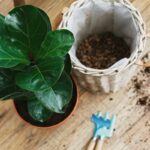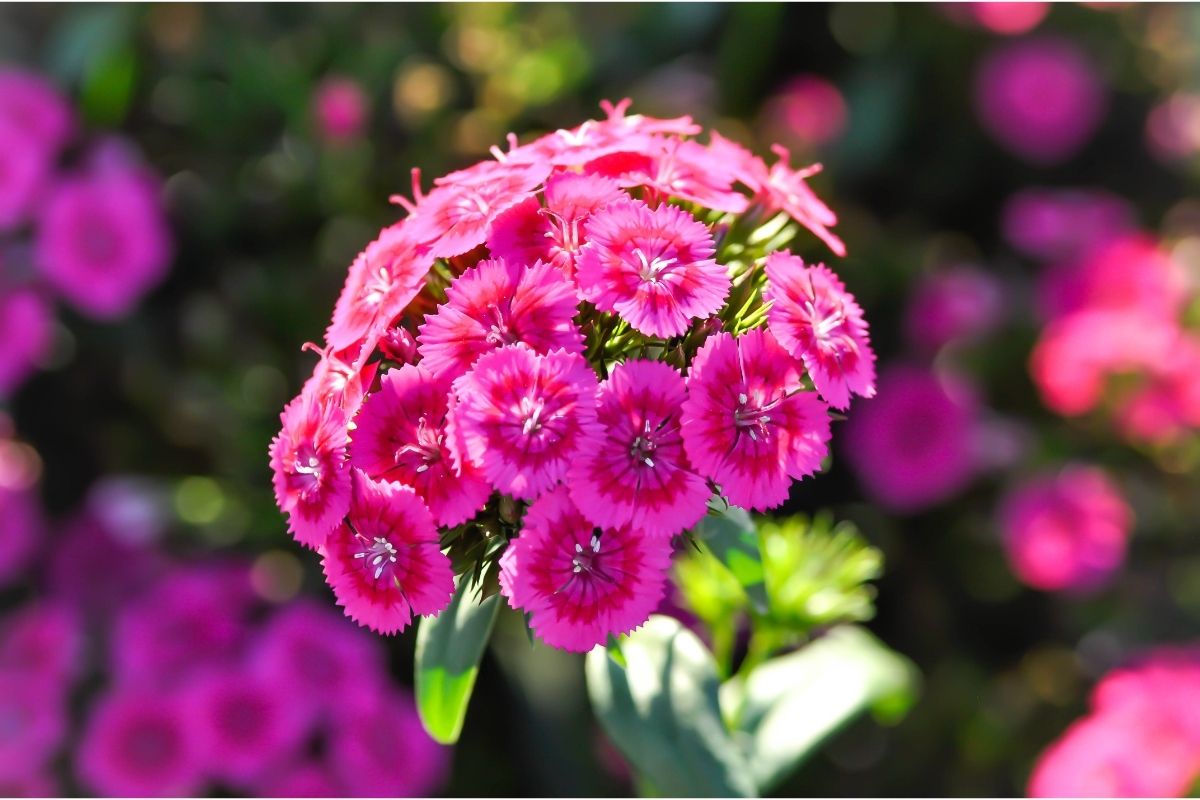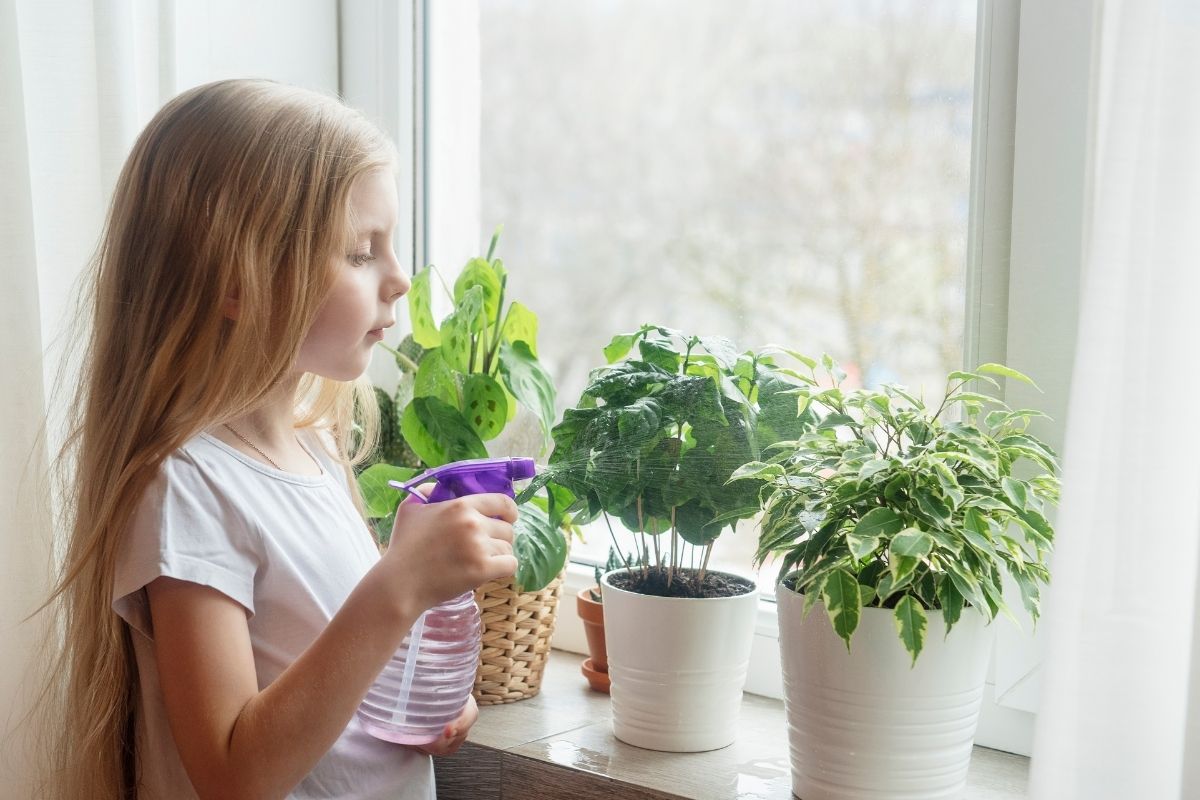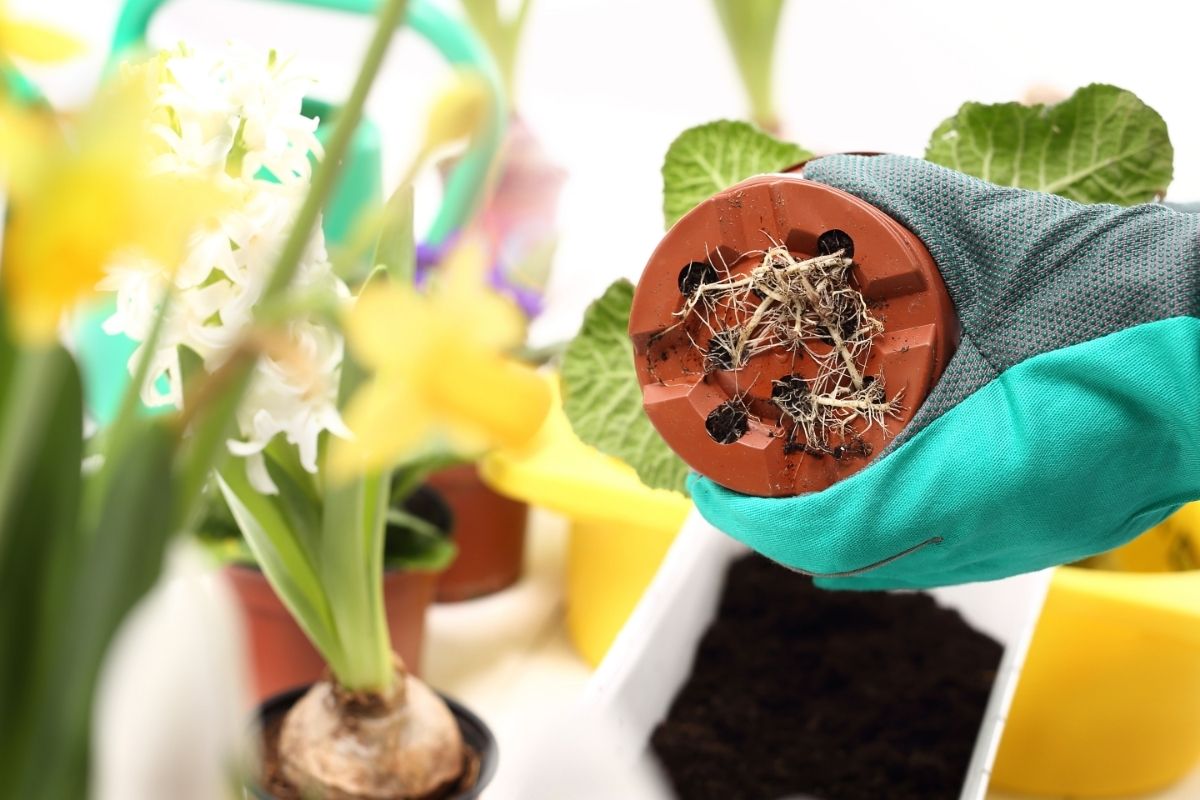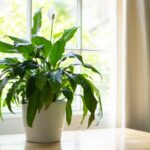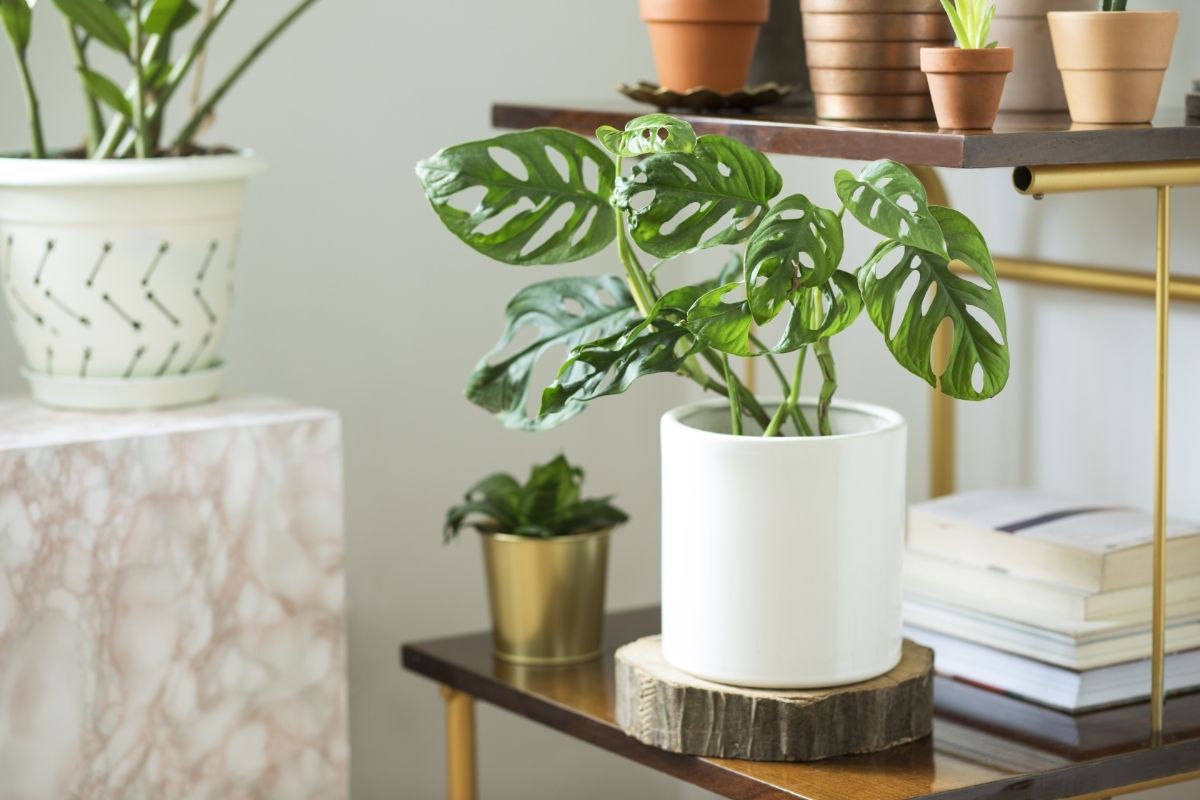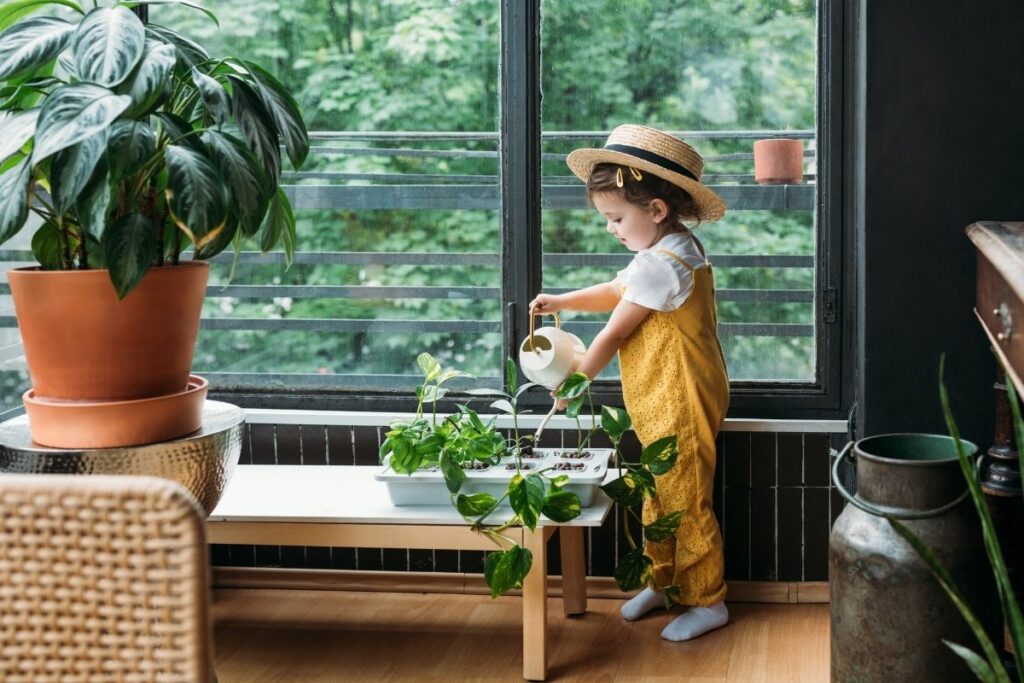
Whilst all houseplants do not require the same amount of nurturance, there are some key rules that will ensure that they are able to grow at their healthiest and thrive accordingly.
In order to be an effective indoor gardener, you should learn to notice when your houseplants need watering.
You should exercise caution in order to avoid over-watering your indoor plants as this can cause root rot and irreparable damage.
In general, the vast majority of houseplants are better off within slightly dry soil as opposed to being overwhelmed with water.
The aim is to give your houseplants perfectly balanced conditions with soil that is moistened without becoming soggy.
Succulents are an exception as they require soaking in order to thrive effectively.
With all other varieties of houseplant, you should pour water into the soil slowly until you notice that it is trickling through the holes in the bottom of the container.
The vast majority of houseplants will only require watering twice a week and you can reduce this to once a week during the winter.
The best way to assess whether your plant requires watering is to use a soil moisture meter or alternatively, to gently place your finger approximately two inches into the soil to assess whether it feels overly dry.
If it does, then it is definitely time to water your indoor plants.
Things To Be Aware Of
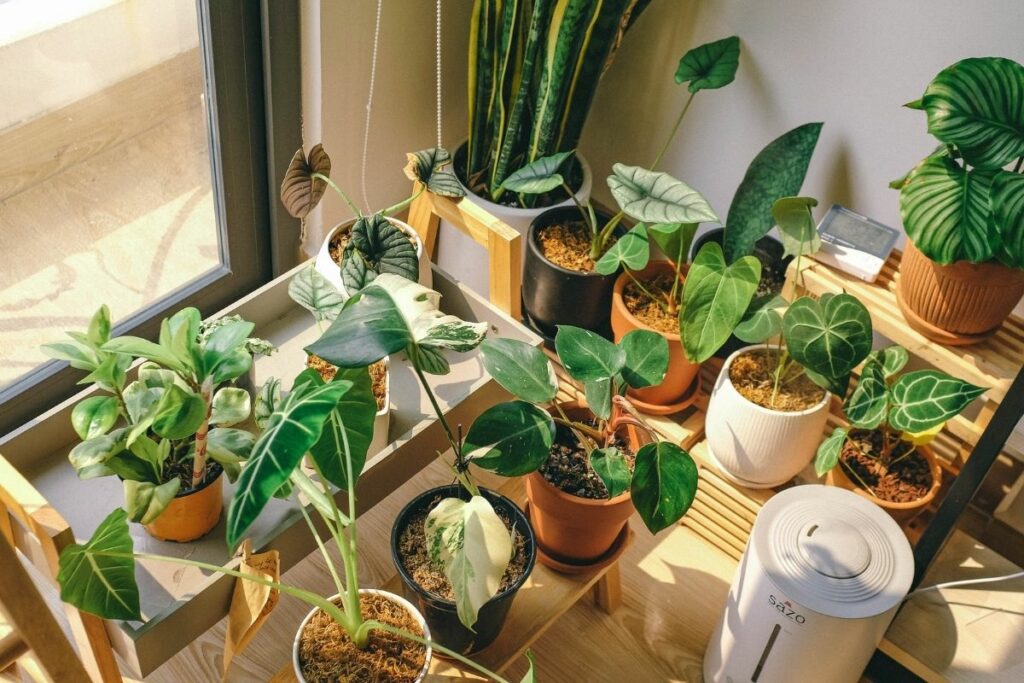
You should maintain an awareness of the ventilation and temperature within your house as the vast majority of indoor plants will flourish within temperatures of 65 and 75°F during the daytime.
It is also important to note that the vast majority of houseplants will need similar humidity levels to those that are experienced within their natural growing environments.
You should also identify whether your plant is an air plant as these plants will absorb moisture from the air and will therefore require you to mist your plants by using a spray bottle.
However, for the vast majority of houseplants, you should avoid condensation that condenses on the leaves of the plant itself as this can pose a threat to the plant’s health.
This is why good ventilation is essential in order to maintain a healthy plant.
You can ensure that your plant is receiving the right amount of ventilation by sitting it near a fan within your household and opening windows in order to circulate a healthy amount of air that will be able to evaporate excessive moisture and prevent the buildup of debris and dust on the leaves of the plant.
You should also make sure that your houseplant is exposed to an appropriate amount of light as all plants require a certain amount of light energy in order to photosynthesize.
However, different varieties of houseplant will require different amounts of light. Unless you purchase desert cacti, your indoor plants will require a healthy amount of indirect light as this form of light stimulates health and vitality within houseplants.
If you are looking for a plant that thrives within lower light conditions, then you should consider purchasing a philodendron plant or a snake plant as these are able to flourish within shadier conditions.
It is important to note that many houseplants will require artificial light sources in order to flourish effectively indoors and this is particularly needed during the winter months when the amount of natural daylight is drastically reduced.
An average light bulb is not going to be effective in order to provide light for your plants and so you will need to invest in LED grow lights that will be able to provide the appropriate amount of light in order to stimulate growth by mimicking natural light effectively.
What Soil Should I Use?
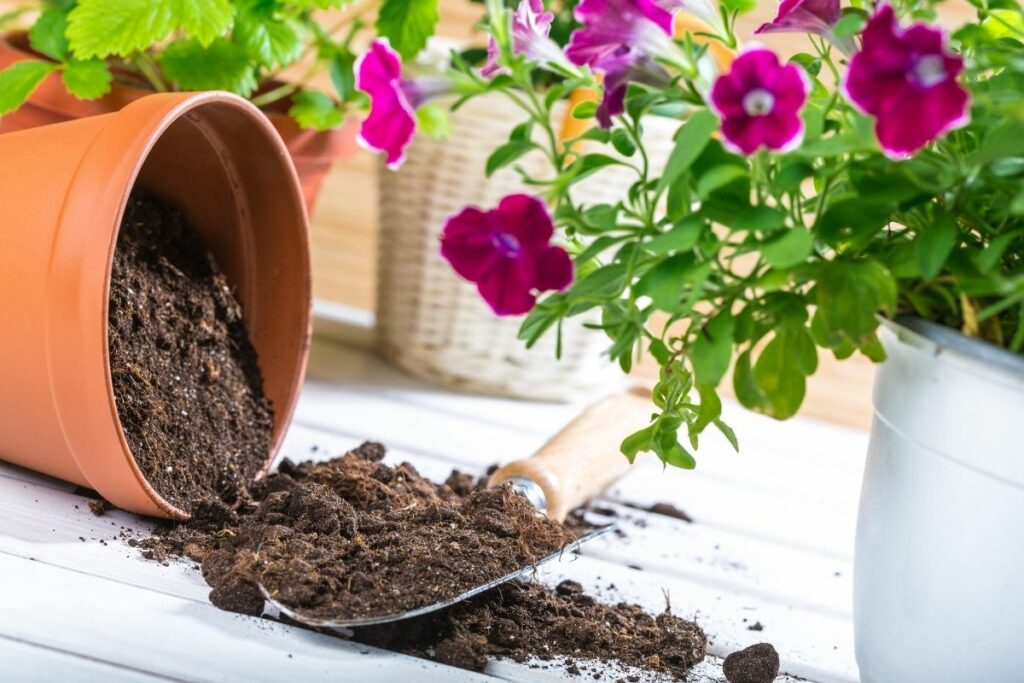
Ideally, you should be using a high-quality variety of potting soil in order to ensure that your houseplants establish healthy roots and this will inherently provide them with the appropriate amount of nutrition and absorption.
These types of soil mixes will usually include shredded bark and peat moss that releases nutrients as it decomposes.
The vast majority of garden centers will sell these soil mixes and where possible, you should choose a soil that is specific to your type of indoor plant.
For instance, an orchid will need faster-draining soil whereas a succulent houseplant will thrive better in more porous forms of soil.
You should also select a pot that can specifically hold your style of plant. Ideally, you should consider the current size of your plant when choosing a pot in order to approximate it’s drainage capacity and overall storage ability.
Choosing a plant that is approximately proportional to your plant’s size will save you hassle further down the line and ensure that your indoor plant is able to establish a healthy root system.
Conclusion
To conclude, you can ensure that your indoor plants grow effectively by purchasing a pot that is relevant to the specific size of your houseplant and also by ensuring that your soil bed contains an abundance of nutrients.
Watering the vast majority of houseplants twice a week will also ensure that they are receiving the correct amount of moisture without becoming overwhelmed.
Above all, you should ensure that you are checking the amount of moisture that is contained within the soil bed in order to ensure that your plants have the best chance of thriving accordingly whilst positioning your indoors plants in an area where they have access to indirect sunlight and an appropriate amount of ventilation.
If you implement all of these key measures, your indoor plants will be able to grow and thrive abundantly without developing any fungal issues.
- Best Hanging Plant For Low Light - September 4, 2023
- Best Indoor Plants Florida - August 28, 2023
- Best Plants For Bathroom Smells - August 21, 2023


